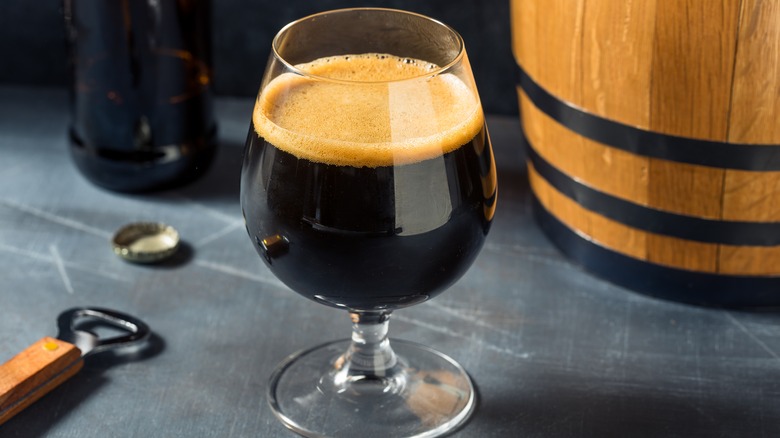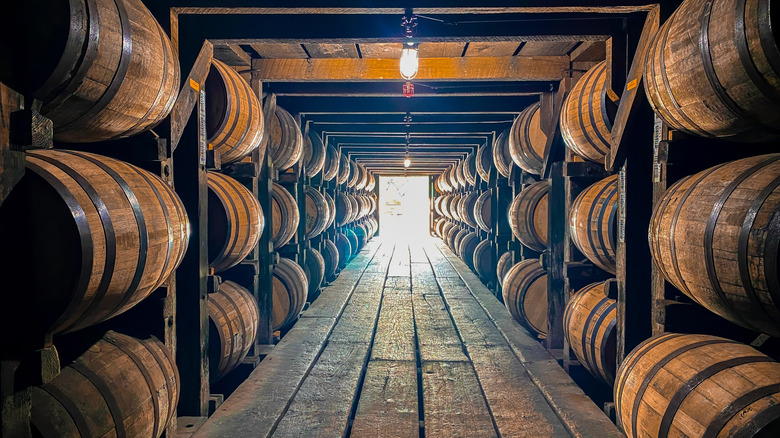How Used Bourbon Barrels Can Impact The Flavor Of Beer
The craft beer industry is built on creativity, with brewers consistently innovating via both centuries-old traditions and brand new ingredients and technologies. When Chicago's Goose Island Brewery became the first to release beer aged in bourbon barrels on a large scale in 1992, it launched an entire category — inspiring other breweries to follow suit.
Aging beer in barrels, or much larger foeders, has been practiced for hundreds of years for spontaneously fermented styles like Belgium's lambics, but the specific use of bourbon barrels has introduced new flavors to other styles in more recent decades. Any beer that goes into these barrels is going to pick up notes of the actual barrel. Part of what distinguishes bourbon from whiskey is that it's aged at least two years in white oak barrels, which are charred to some degree. So, the beer gets the oak notes, which can also include vanilla from the lignin in oak and guaiacol, which can taste like cloves, cinnamon, and pepper.
Then there are the char notes, which vary as different distilleries char their barrels to different degrees. There will probably be some amount of smokiness; lighter chars are toasty and nutty, while darker chars can taste like dark chocolate and espresso. Plus, the beer takes on any of the different flavors bourbon has. Depending on the specific bourbon that was in the barrel, that can include caramel, honey, brown sugar, tobacco, leather, dark dried fruits, and more.
Beers best suited for the flavors of bourbon barrels
Yet another flavor contributor has to do with which beers are best suited for aging this way. In general, oxygen is the enemy of beer. Light and dark beers are differentiated by how long the malts have been kilned. Light beers with light malt, like lagers and IPAs, should always be consumed pretty quickly after they're canned, kegged, or bottled because when oxygen gets to them, they taste like wet cardboard. However, darker beers can develop interesting, desirable flavors when oxygenated, which means not only can they be aged before they're consumed, but they can benefit from bourbon barrel flavors.
Over the course of six months to two years (the average range of time brewers may age their beers) oxidation can lead to sherry-like notes. Hop bitterness fades and malt sweetness increases. Because of this, the beers you see aged in bourbon barrels are dark and malt-forward, especially when you factor in the flavors of bourbon that better complement something more rounded, fuller, and sweeter, as opposed to, say, a wheat beer.
These flavors plus the seemingly limitless possibilities brewers can explore — different beers in differently charred barrels from different bourbons — have led plenty of breweries to craft their own iterations. Goose Island still releases annual lineups of its Bourbon County Stout, including variations with another flavor contributor: additions like fruits and nuts in the barrels. There's a good chance your local brewery has a bourbon barrel-aged beer too.

